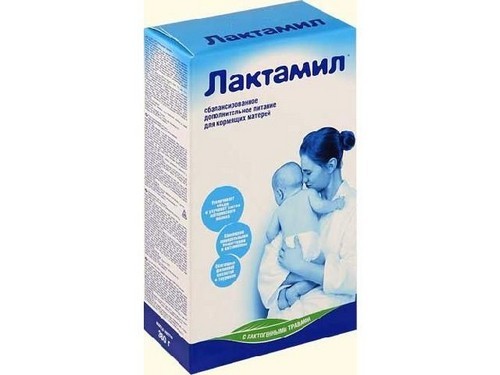To help a newborn baby get used to life faster outside her mother’s belly can be one main way – to provide him with proper and timely feeding in addition to regular hygiene and good sleep.
The first months of life are the most difficult for both mom and baby. Their most important task is to get used to each other and work out the correct regime of the day.
Mom will have the hardest time, because between worries about the baby and the house, she will have to deny herself both her favorite dishes and pleasant activities. Let’s look at what you can eat after childbirth without consequences for the baby’s health and well-being in the first weeks after discharge.
Nutrition of a nursing mother in the first 1.5-2 months
No doctor with an accuracy of 100% can claim the harmlessness of certain products for the body of a newborn baby. But the practice of pediatricians shows that mother’s nutrition after childbirth should consist only of cooked foods, raw fruits and vegetables are unacceptable, this is one of the hallmarks of a nursing mother’s diet.
The fact is that the baby’s digestive system will ripen for the next few years, so only the simplest foods are easy for him to digest. From an improper nutrition of the mother, a food allergy very often occurs, manifested by atopic dermatitis and even obstructive bronchitis. In second place are digestive problems, frequent constipation, bloating and colic.

List of foods suitable for feeding a nursing mother :
- buckwheat, rice and oat groats;
- dairy products;
- bread and bakery products;
- apples, bananas;
- dried fruits;
- butter and vegetable oil;
- vegetables;
- vegetable soups and broths;
- meat;
- eggs, cheese, cookies;
- fish.
For each and the listed products, there is a rule for its preparation and the amount allowed for use. None of the products should be abused and eaten more often 3-4 times a week. When compiling a diet, doctors recommend starting an observation diary consisting of 2 columns. In the first, the ingredient to be administered is indicated, in the second – the baby’s reaction to it. It’s best to eat new “dishes” in the morning, so that by the evening the negative effects from the small tummy pass and the whole family sleeps peacefully.
Any porridge is boiled in water with a minimum amount of salt and oil. Buckwheat is pre-soaked for several hours, then the water is drained, washed with swollen cereal and boiled. They do the same with rice, but it fixes, so it can cause constipation in the crumbs. You can fill the porridge with olive, sunflower, unrefined and butter. This is the easiest and healthiest meal for the whole family.
Of fermented milk products, preference should be given to kefir, yogurt, fermented baked milk. Sour cream, cream and, of course, milk is advisable not to use. The first two products are too high in fat, and milk can be described as one of the most powerful allergens, no diet accepts these ingredients. Of course, the degree of allergenicity of milk decreases after boiling, but you should not experiment. You can drink up to 500 ml of dairy products per day. You can eat yogurt, but only if it is cooked at home without additives and dyes. Sour-milk products should be considered as food, and not an addition to the morning and lunch menu. Let them form the basis of lunch or afternoon tea.

A separate article is always meat. This product is rich in protein, necessary for the full growth and development of the child. It is preferable to build nutrition after childbirth on the use of rabbit, turkey or lean pork. The meat must be cooked or baked until cooked. A side dish to such a dish can be potatoes (boiled or baked), stewed vegetables. The potatoes are soaked for 8-10 hours to remove excess starch and possible nitrates. You can boil pasta from durum wheat.
Eggs, like milk, are strong allergens. They can be consumed in boiled form (soft-boiled) 2-3 times a week. If the child does not respond well to them, you can try again in 2-3 weeks. Perhaps an allergic reaction has developed on protein, then the yolk can be consumed safely.
Low-fat fish such as hake or pollock should be baked. River fish are considered more allergenic. Other seafood such as crab and shrimp are not allowed. By the way, fish can be cooked with spices such as peppers, marjoram, bay leaves, dill. They improve digestion.
The nutrition of a nursing mother after childbirth can be varied with fruits and vegetables. Of the fruits, these are apples and bananas, and apples are only in baked form. Baked apples are a unique product, it contains easily digestible pectin and vitamin C, as well as a host of useful trace elements. In addition, the flesh of a baked apple improves the intestinal microflora, promoting good local immunity, and it is weakened by the mother after childbirth. A small amount of bananas is consumed raw.
Vegetables allowed zucchini, potatoes, cabbage, carrots and beets. You can start with zucchini and potatoes. They are absorbed well and they have the lowest allergenicity. You can cook vegetable soup from these vegetables by adding a little dill. Caviar is prepared from beets and carrots and consumed in very small quantities. Cabbage often causes bloating, so it is administered in boiled form in small doses, it is good if it will be broccoli. Often, pediatricians recommend that the mother after childbirth to introduce baby puree into her diet. This is both a canned food, and prepared independently from fresh vegetables.
The diet of a nursing mother includes wholemeal bread, can with bran. It is better to prefer rye flour products. Muffin is not prohibited. Let it be a regular loaf, the simplest cookie, devoid of baking powder, flavor enhancers and fillings. You can bake oatmeal cookies at home.
What can I drink?
This is drinking still water, green and black tea, dried fruit compote. A compote of dried apples with a small amount of raisins and rose hips is useful. If the child suffers from constipation, you can add a little prunes and dried apricots. Drinking plenty is good. From a sufficient amount of liquid, milk arrives, toxins are removed, the intestines are quickly cleaned. Especially you should drink a lot in the first weeks after childbirth in order to remove the remnants of drugs from the body and minimize their ingress of crumbs.
There is an opinion that the menu of a nursing mother should not differ much from what she ate during the period of carrying the baby. Theoretically, we can agree with this. In practice, a different picture is observed. Previously, the baby did not feel the effects of the environment, as it was securely hidden in her mother’s tummy. After birth, numerous microbes, viruses, unstable ambient temperature, etc., “attack” his weak body.
If this situation is complicated by aggressive nutrition, the baby will have a very difficult time, and the consequences can be the most unpredictable. Parents are required to take care of their own child so that their mistakes do not lead to illness, sleepless nights, worries and failures. On this, the question that illuminates the nutrition of a nursing mother after childbirth can be considered closed, although there is still a group of products that every woman should know about the ban on the use.
Prohibited Products
The nutrition of the mother of a newborn is a strict diet, consisting of a huge number of prohibitions. But what can’t you do for the health of your own baby? In addition, it is useful for the figure.
So, the list of prohibited products includes:
- fast food and any convenience foods;
- canned food and pickles;
- chocolate;
- sausages and sausages;
- pearl barley and semolina;
- caviar;
- coffee, cocoa and spirits;
- sugar, halva;
- garlic and onions;
- legumes;
- ice cream;
- berries, pears, watermelon and other “overseas” fruits;
- radishes, cucumbers, tomatoes;
- tomato sauce and mayonnaise.
Based on this list, we can conclude that the menu of a nursing mother should include fresh, healthy and neutral products. You can’t include fried, too salty, sweet or seasoned with a lot of spices in the diet. Nutrition after childbirth should be easy, but complete, to provide the baby and his own body with all the necessary set of nutrients, vitamins and minerals.
All of the above products either cause allergies, or are difficult to digest, or contain a large number of preservatives and other additives. Mom can be reassured a little by the fact that her diet will come to an end in about 4-6 months. It was at this time that the child was allergic to certain foods or its absence, and the small tummy begins to get used to the changing composition of mom’s milk.
When to expand your diet?
Wondering what you can eat after childbirth, at first glance it seems that almost nothing. But this is a temporary diet that can be significantly relaxed in six months or even earlier. Many mothers are so accustomed to restrictions that they comply with them for a very long time. This is good, since no one has yet repealed the principles of proper nutrition.
If up to 3 months the baby responded well to a changing diet and rarely bothered parents with red cheeks and colic, the mother may well begin to make a new menu. Now in her diet may appear pearl barley and millet, boiled beans or soup from it, boiled milk, cheese, sour cream, boiled pear, stewed blueberries, currants, cherries and other tasty food. You can treat yourself to chicken and veal, homemade jam, nuts, freshly squeezed juices. Again, all products of the new menu are introduced gradually, no more than 1-3 per week. Alcohol, coffee and canned goods are still banned. Each mother should remember that only after the child is introduced to the common table, she will be able to return to its previous menu, if his recipes are still preserved in memory, and the taste is “in the tongue”.
Postpartum nutrition sometimes resembles the toughest diet. But one moment distinguishes it from similar diets developed by specialists. This is a stimulus or expected result, which means the health of the most valuable person in the world. Follow the principles of proper nutrition and raise healthy babies.



